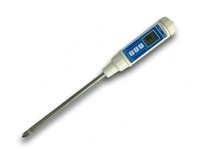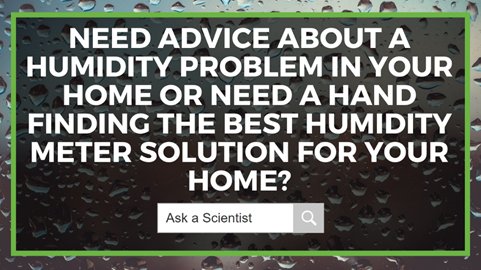Humidity inside your home - what levels are safe?
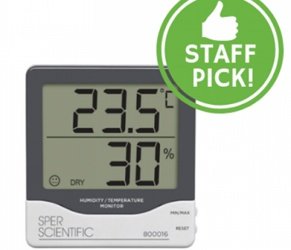
Humidity can impact your comfort and health significantly. Yet, surprisingly, many of us don’t know what indoor humidity levels we should maintain or how to achieve them – so we asked our scientists for their input. This article summarises their advice.
Understanding relative humidity
We should explain what this term means because healthy humidity levels are calibrated on a relative humidity scale. Technically speaking, relative humidity measures the amount of atmospheric water vapour present at a specific temperature, expressed as a percentage.
Let’s unpack this.
Hot air can hold more water vapour than cold air. So, relative humidity of (say) 25% means the atmosphere can suspend a lot more moisture at the current temperature before it becomes saturated – in fact, another 75%.
100% relative humidity means the air is completely saturated. Approaching saturation, inside your home begins to fog, condensation appears on surfaces, and nasty things that can harm you and your property are loving life.
Problems when humidity is outside the healthy range
When humidity is too high - you can experience discomfort, have trouble sleeping, suffer asthma, have an allergic reaction, experience heat stroke. In addition, high levels of indoor moisture encourage mould growth and provide conditions for critters like dust mites and termites to thrive.
Mould - Homes in tropical areas or dwellings with rising damp are particularly at risk. Be careful if you have health issues and regularly check for signs of mould in moist, poorly ventilated areas like kitchens, bathrooms, laundries, built-in robes or basements.
Dust Mites: Dust mites are responsible for many allergic reactions. They enjoy moderate temperatures, high humidity and love soft furnishings!
Termites: These insects go for warm, dark, moist areas where they can munch and breed. Favourite places are any damp areas with plenty of wood.
When humidity is too low – the air becomes dry, making humans more vulnerable to colds and other infections. Further, skin can become dry and itchy – which is not great for sufferers of conditions like eczema.
Your home is the place you spend most of your time, so controlling indoor humidity levels can make a big difference to your well-being. To take control of your indoor environment, you need to know two things:
- What is the healthy range of relative humidity; and
- The smartest, easiest and most cost-effective ways to monitor and manage indoor humidity concentrations.
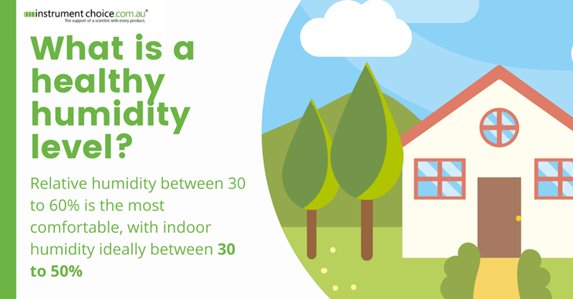
Five of the smartest ways to maintain healthy humidity levels in your home
1. Consider investing in a Humidifier or Dehumidifier – these devices add to or remove moisture from the air.
2. Air Conditioning Systems don’t just cool the air inside a home - they reduce air moisture and lower humidity.
3. Open a window – a cheap and effective way of reducing humidity. Open a window, hear the birds sing and improve airflow around your home. Don’t be afraid of fresh air!
4. Ventilate, ventilate, ventilate - instal and use energy-efficient extraction fans when creating lots of indoor moisture from activities such as cooking, having a shower, or running a dryer. They’re cheap to instal and operate, help prevent property damage and support good health.
5. Get a good Humidity Meter – most of us live busy lives; we may not notice when our environment is getting unhealthy - and why try to guess humidity levels? A modest investment in a quality humidity meter, particularly one that provides wifi or Bluetooth alerts, will warn you whenever corrective action is warranted.
|
Scientists’ Tip: Use common sense when choosing the best method to control humidity in your home. For example, if you live in the tropics, you’d appreciate an evaporative cooler like a hole in the head. Similarly, a desert dweller would get little joy from a dehumidifier during the peak of summer! |
Humidity meters for managing indoor humidity levels
(Also known as hygrometers) humidity meters are affordable and effective. Our scientists have gathered models they recommend as ideal for home use.
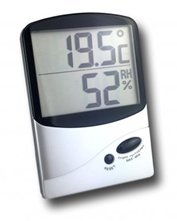
Thermometer & Hygrometer with Jumbo Display
|
For simple and affordable home humidity monitoring - check out the IC7312 product page here. |
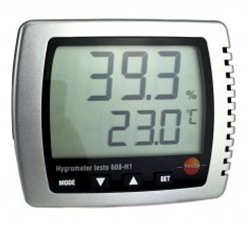
Hygrometer, Temperature, Dew Point Meter With Battery
|
Trust Testo’s reputation for quality and proven performance.
|
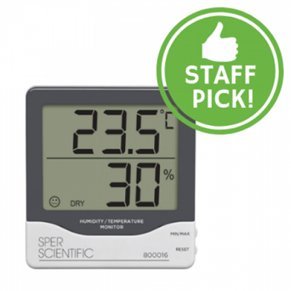
Humidity & Temperature Monitor
|
Easy to use with versatile mounting options. Our scientists recommend you look no further than the ever-popular IC800016. |
The Final Word
Taking control of humidity levels in the home is simple, doesn’t cost much, and will protect both humans and property. Using a humidity meter removes the guesswork, alerts you to potential dangers and makes the job of monitoring humidity a whole lot easier.
If you’d like advice about a humidity problem in your home or need a hand finding the best humidity meter solution for your home, contact an Instrument Choice Scientist: Call 1300 737 871 or email [email protected].
Also interesting
Here’s a quick quiz: Would you prefer to sit in front of a humidity meter and manually record readings – or have a smart, reliable, WIFI-enabled humidity logger do the recording for you?
Anticipating your answer, our scientists have compiled a list of smart, ambient humidity recording devices that make monitoring humidity levels and accessing past data a cinch.
Get the complete list of recommendations
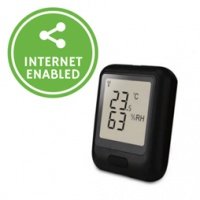
Our scientists regularly receive inquiries about long-probed soil moisture meters, helping customers find the perfect devices for their needs and explaining how to use them. In addition, because we answer similar questions, we often publish lists of the best contemporary soil moisture meters that feature long probes and share helpful tips.
View the latest, most popular soil moisture meter with long probes plus helpful measuring tips
